A Manhattan penthouse recently transformed its stark white walls into a living tapestry of emerald ferns and violet orchids, instantly elevating the space from minimal to magnificent. You’ll discover that luxury plant décor isn’t just about placing a few potted plants around your home; it’s about creating intentional botanical installations that serve as living art. These nine sophisticated concepts will show you how to integrate statement-making greenery into your space while maintaining an upscale aesthetic.
Contents
Statement-Making Living Walls
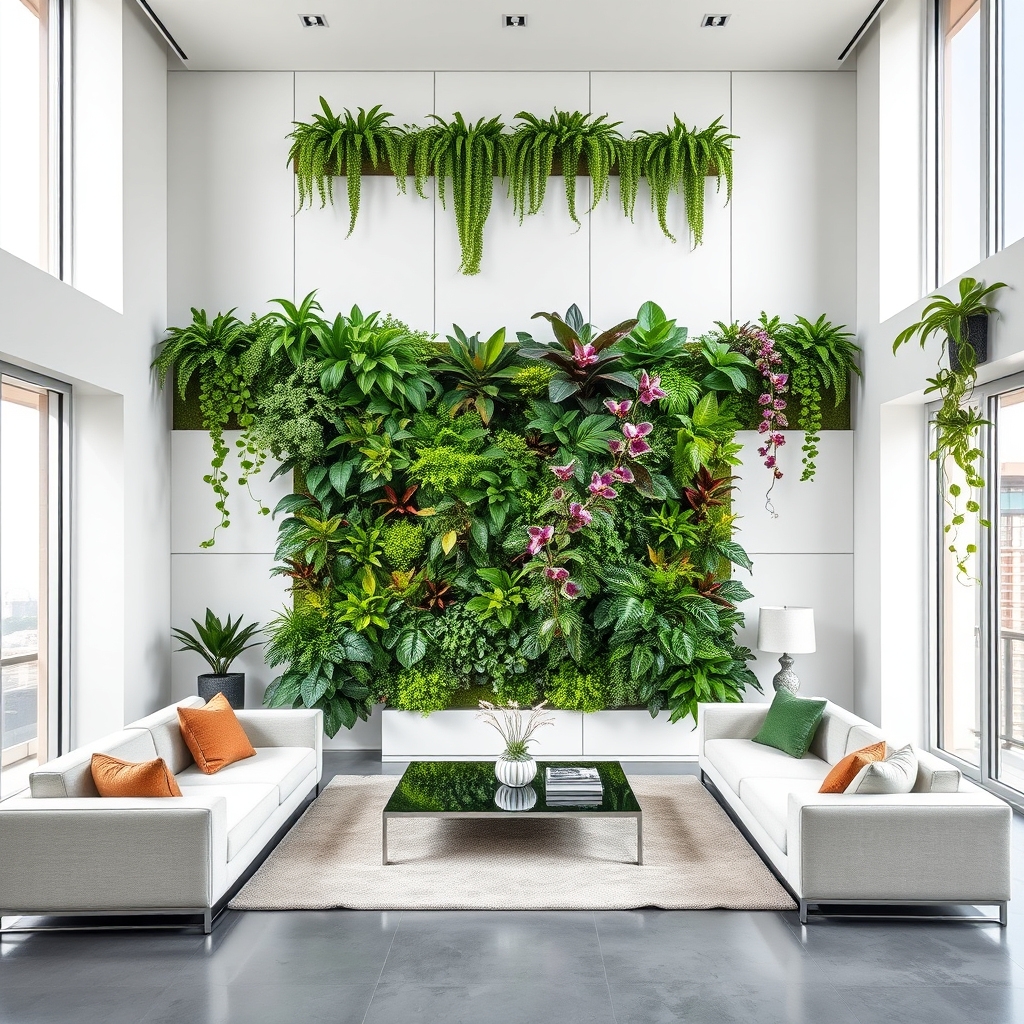
Statement-making living walls are vertical gardens that transform ordinary walls into lush, three-dimensional landscapes of plants.
These installations feature diverse plant varieties arranged in patterns or artistic designs, growing in modular panels or specialized growing systems mounted directly onto walls. The walls can incorporate ferns, succulents, tropical foliage, herbs, and flowering plants, creating a dramatic visual impact while maximizing space usage.
Living walls serve both aesthetic and practical purposes, acting as natural air purifiers and sound insulators while adding a striking biophilic element to interior or exterior spaces.
A key distinguishing feature is their vertical orientation, which challenges traditional horizontal gardening concepts and allows for creative plant compositions that can span from floor to ceiling.
The walls can be customized with different textures, colors, and plant species to match specific design aesthetics or environmental conditions.
Sculptural Plant Pedestals and Stands
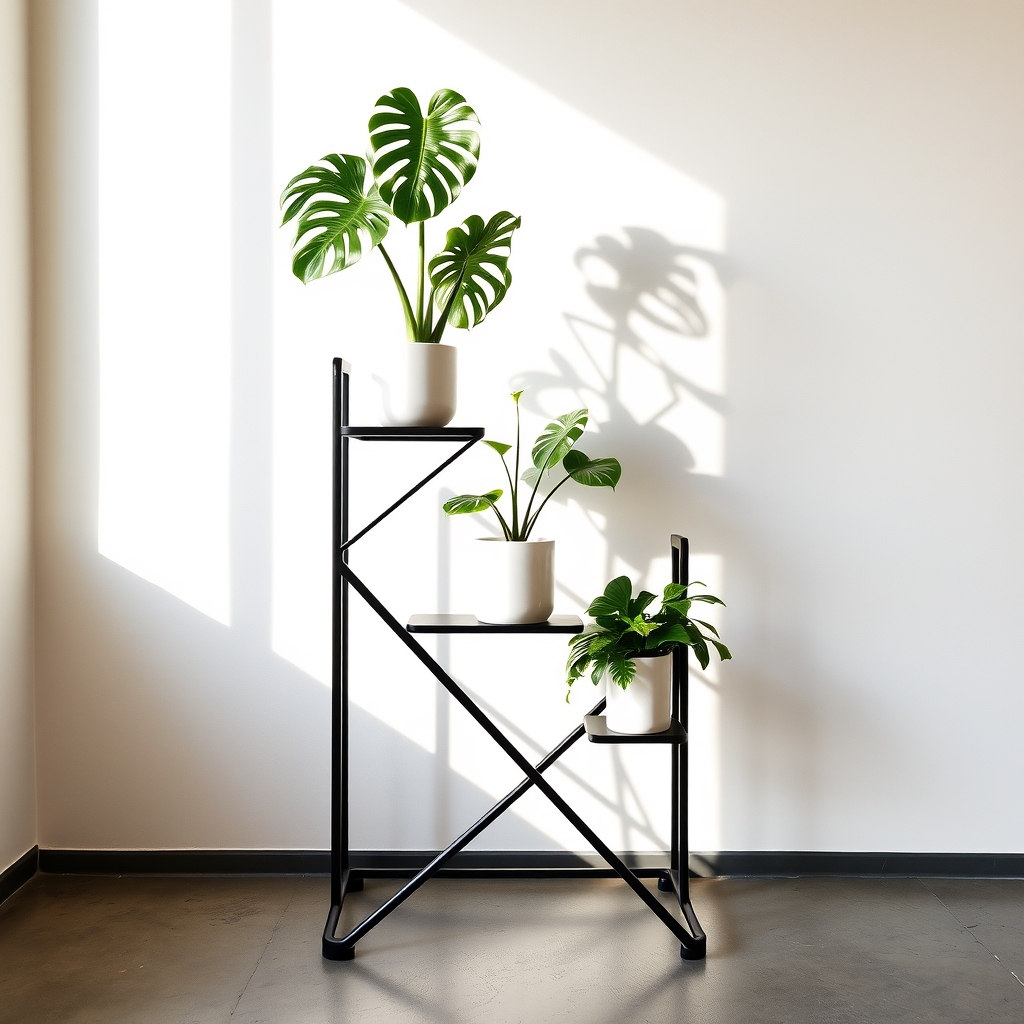
Sculptural Plant Pedestals and Stands are artistic support structures designed to elevate and showcase indoor plants while serving as decorative elements themselves.
These pieces feature distinctive shapes, curves, and geometric patterns crafted from materials like metal, wood, ceramic, or acrylic. Heights typically range from tabletop size to floor-standing models reaching several feet tall.
Common designs include:
- Minimalist wire frames with clean lines
- Twisted or spiral metal structures
- Multi-tiered platforms with varying levels
- Abstract sculptural forms that cradle plant containers
- Art deco-inspired geometric patterns
Unique features:
- Double functionality as both plant support and artistic statement
- Varied heights to create visual interest
- Built-in drainage solutions
- Adjustable or modular components
- Weather-resistant finishes for indoor/outdoor use
These stands transform ordinary houseplants into living art installations while maximizing vertical space and adding architectural interest to interior spaces.
Dramatic Ceiling-Suspended Planters

Dramatic ceiling-suspended planters are hanging garden elements that create visual interest by displaying plants at varying heights from above.
These installations typically feature plants cascading from containers attached to ceiling mounts using cables, chains, or macramé hangers. The planters can be arranged in clusters, linear formations, or staggered patterns to maximize vertical space and create a floating garden effect.
Their key distinctive feature is the ability to draw the eye upward while adding lush greenery without occupying floor space. Common plant choices include trailing varieties like pothos, string of pearls, or hanging ferns that naturally grow downward, enhancing the dramatic suspended appearance.
Mixed-Metal Container Gardens
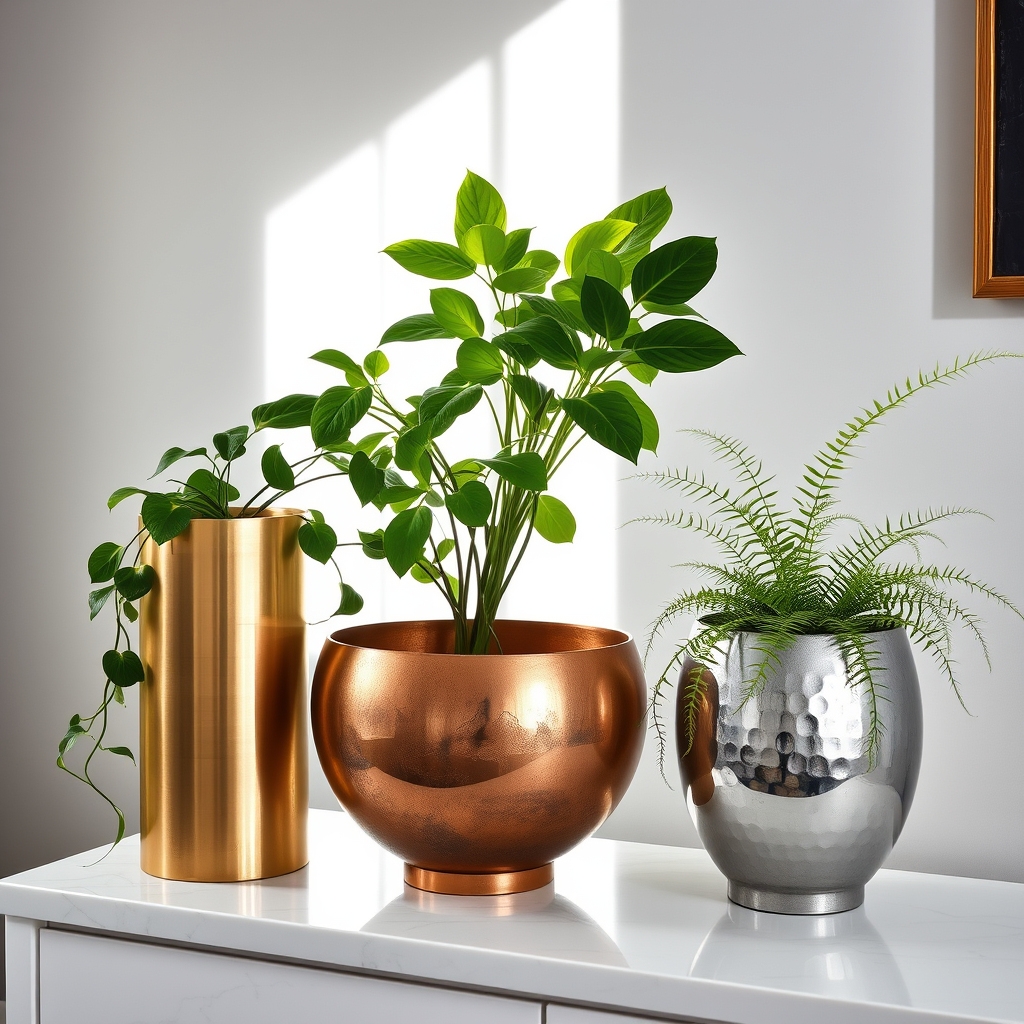
Mixed-metal container gardens combine various metallic planters and vessels to create visually striking plant displays.
These arrangements typically feature containers made from copper, brass, silver, zinc, or galvanized steel, each developing unique patinas over time. The containers can range from polished and sleek to weathered and rustic, offering textural contrast when grouped together.
Plants are strategically placed in these different metal vessels, with trailing vines, upright specimens, and flowering varieties creating layers of greenery against the metallic backdrop.
The combination of different metal finishes adds depth and industrial charm to both indoor and outdoor spaces, while the oxidation process of certain metals provides an ever-evolving aesthetic element to the garden display.
Minimalist Botanical Arrangements
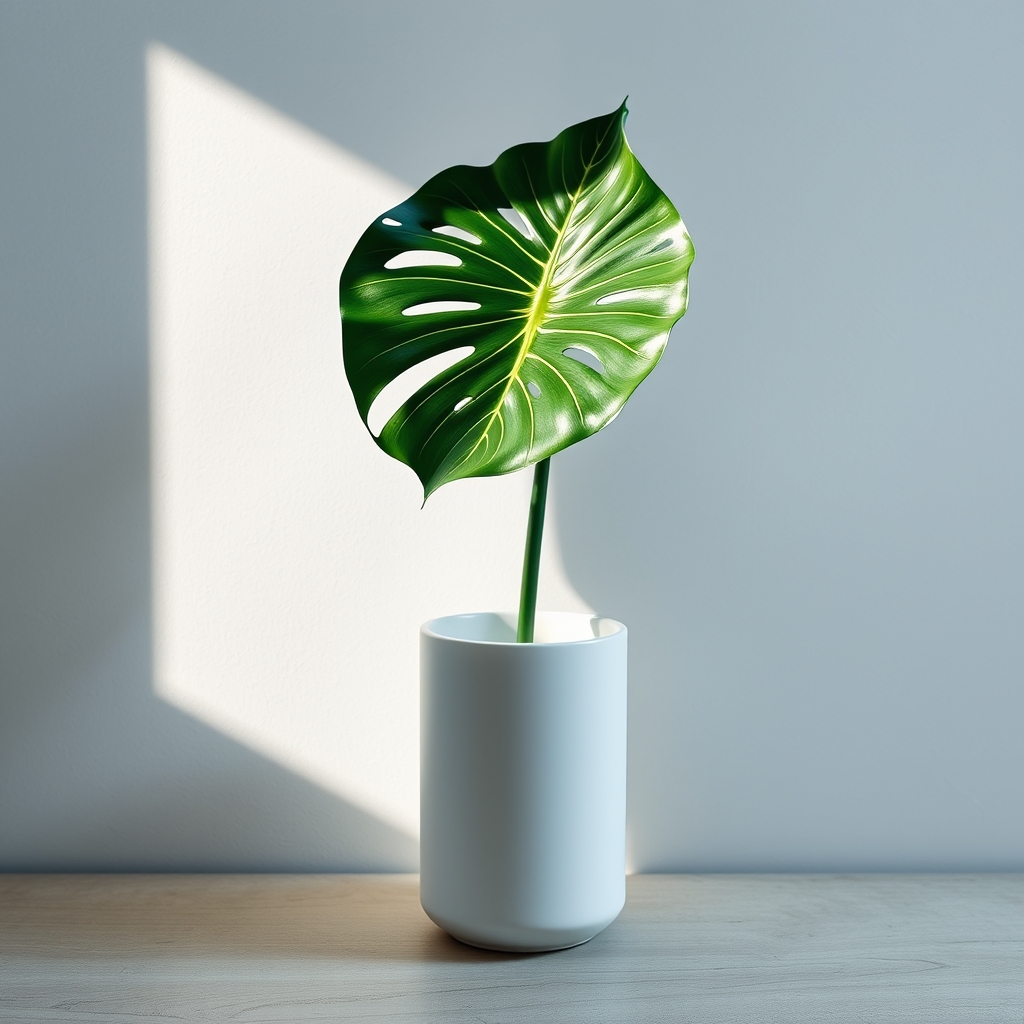
Minimalist botanical arrangements feature clean, simple designs that emphasize negative space and carefully selected plants or stems.
These arrangements typically incorporate a limited color palette, often using single species or monochromatic elements. Key characteristics include:
- Single stems in clear vessels
- Sparse leaf or branch arrangements
- Geometric or streamlined containers
- Focus on plant silhouettes
- Limited variety of botanical elements
- Natural materials like wood, stone, or glass
- Asymmetrical yet balanced compositions
- Purposeful empty space as part of design
- Neutral or muted color schemes
- Simple, uncluttered presentation
These arrangements align with minimalist design principles, where “less is more,” allowing each plant element to make a strong visual statement without competing elements.
The style often highlights architectural qualities of plants, such as interesting stems, unique leaf shapes, or distinctive textures.
Curated Corner Plant Collections
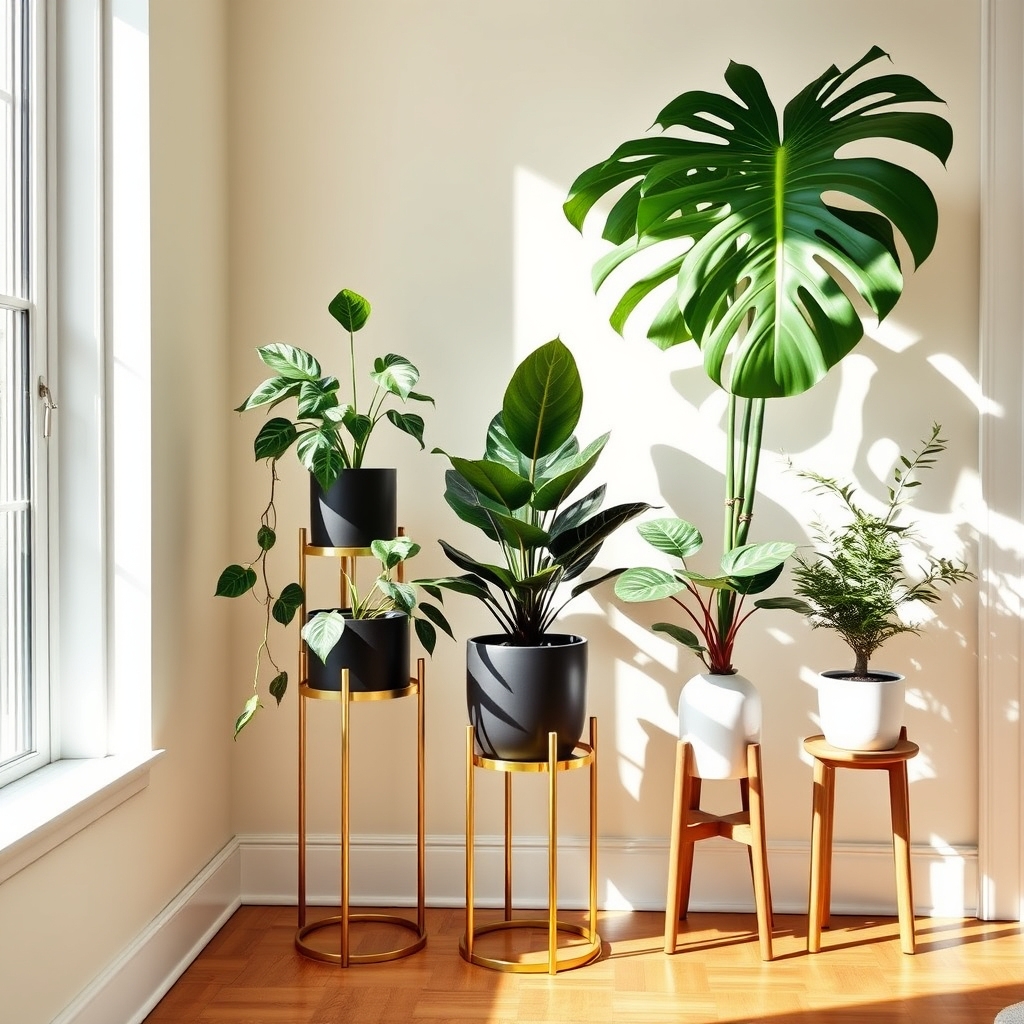
Curated corner plant collections feature thoughtfully arranged groupings of complementary plants positioned in room corners to create visual interest and maximize unused space.
These displays typically combine plants of varying heights, textures, and leaf shapes, often arranged on tiered stands, shelves, or plant pedestals.
Common elements include:
- 3-5 plants of different sizes
- Mix of trailing and upright growth habits
- Coordinated decorative pots or planters
- Strategic placement using varying elevations
- Complementary foliage colors and patterns
Unique features:
- Creates a natural focal point
- Transforms empty corners into living displays
- Allows for seasonal rotation of plants
- Provides opportunities for layered lighting
- Maximizes vertical growing space in compact areas
Plants are typically grouped based on similar care requirements for easier maintenance while maintaining aesthetic appeal.
Illuminated Plant Displays
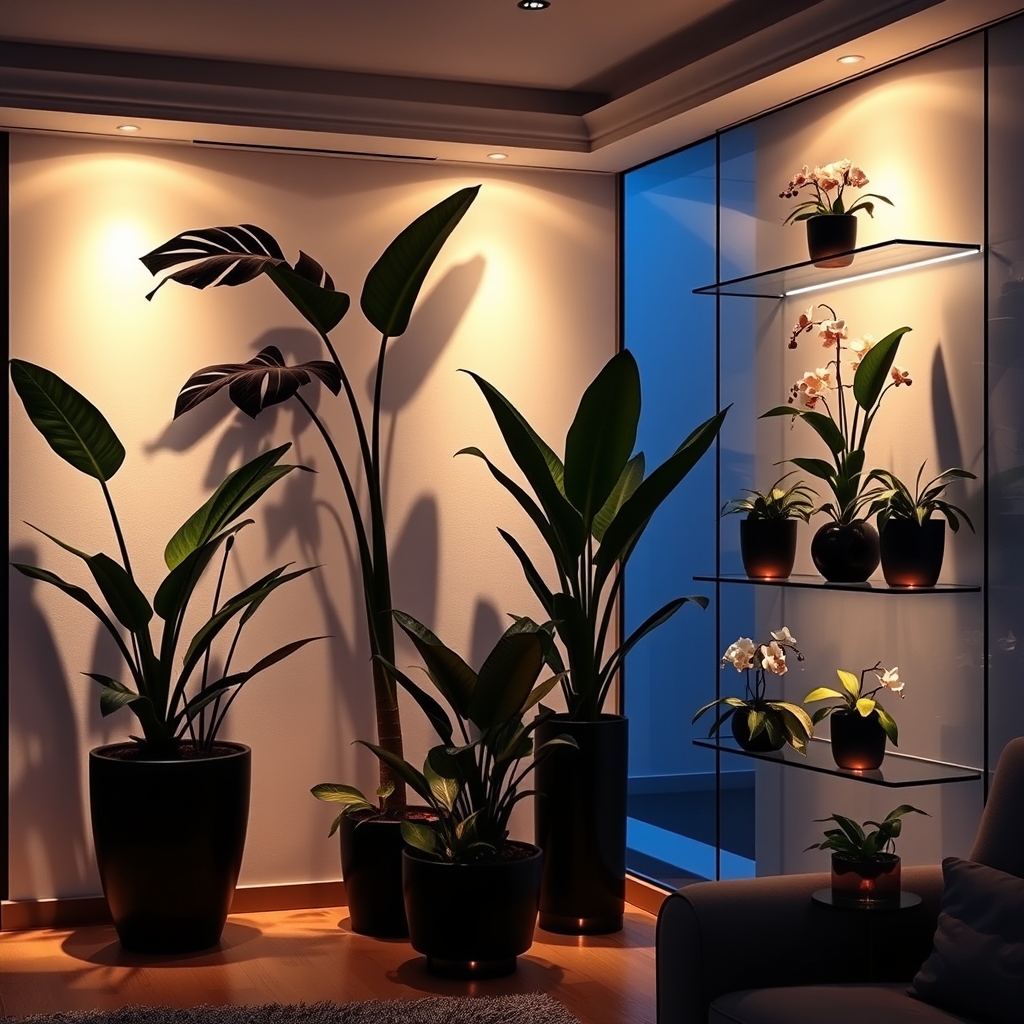
Illuminated Plant Displays combine decorative plants with strategic lighting to create eye-catching living arrangements.
These displays feature plants positioned alongside or within light sources, including LED strips, spotlights, or backlit panels. The lighting elements can be mounted underneath, behind, or integrated within plant containers, casting dramatic shadows and highlighting the plants’ natural forms.
Key characteristics:
- Specialized containers with built-in lighting systems
- Uplighting that emphasizes plant silhouettes and textures
- Color-changing LED options for varied ambiance
- Motion sensors for automatic illumination
- Weather-resistant designs for outdoor applications
- Solar-powered options for sustainable lighting
Common applications include:
- Indoor living walls with integrated lighting
- Illuminated terrariums
- Backlit floating plant shelves
- Garden pathway lighting with planted borders
- Outdoor landscape feature lighting
- Hanging plants with downward-facing lights
The displays create visual interest both day and night, transforming ordinary plant arrangements into dramatic focal points.
Architectural Plant Screening
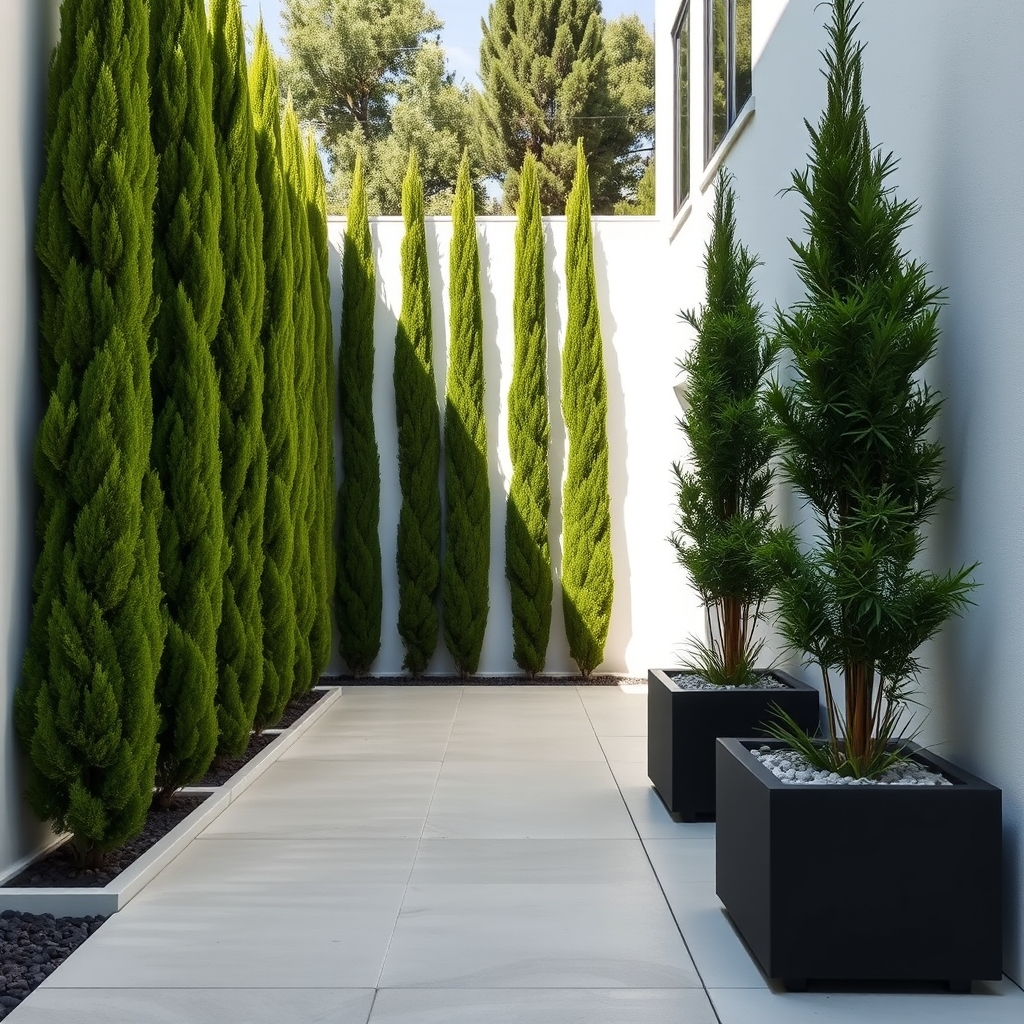
Architectural plant screening refers to the strategic use of plants to create living barriers, walls, or dividers in outdoor and indoor spaces.
Tall, structured plants are arranged in rows or groupings to provide privacy, block unsightly views, reduce noise, or define distinct areas within a landscape.
Key characteristics:
- Vertical growth patterns with dense foliage
- Uniform height and spacing
- Often evergreen varieties for year-round coverage
- Can be formal (precisely trimmed) or informal (naturally growing)
- Usually planted in linear formations or planned geometric patterns
Common screening plants include:
- Bamboo
- Cypress trees
- Boxwood hedges
- Italian Cypress
- Privet
- Climbing vines on trellises
The screens can range from 3-20 feet in height, depending on the desired coverage and plant species selected.
Plants may be grown in ground or in containers for mobility and flexibility in placement.
Monochromatic Green Groupings

Monochromatic green groupings feature collections of plants with varying shades of green foliage arranged together to create visual interest through subtle color variations.
These arrangements combine different leaf textures, sizes, and green hues – from deep forest greens to bright chartreuse – while maintaining a cohesive single-color theme.
Plants are typically grouped by height, with taller specimens at the back and shorter ones in front, creating depth and dimension.
The style’s unique feature lies in its ability to achieve striking visual impact using only green tones, relying on contrasting leaf shapes, structures, and subtle color gradients rather than bold floral colors for aesthetic appeal.
